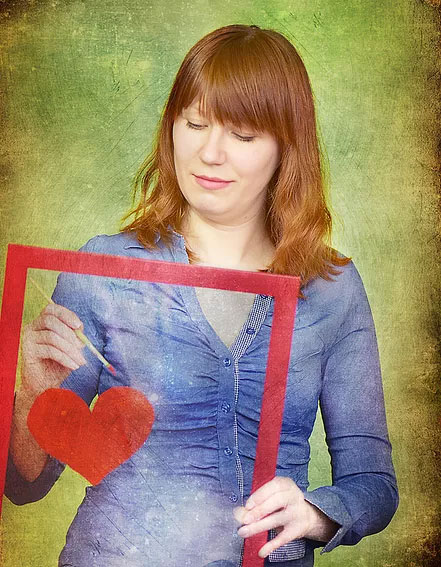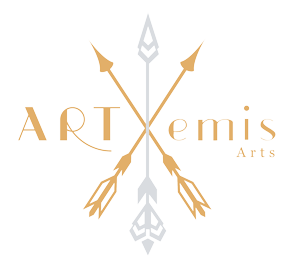
Women on the Verge: Volume Three – Why do YOU make art?
No one religion can console this enormous country.
No single philosophy convince it.
No therapy relieve it of its burdens.
No legal system comfort its injustice.
No medicine deliver it from pain.
No government give it joy.
Only art does that.
— playwright Romulus Linney
Vol. 3: Why do YOU make art?
I’ve been focused on “why?” recently. Why have I prioritized my writing projects the way I have? Why those specific projects? Why have I added a blog to the list? This last question was the easiest to answer. While teaching at various colleges and universities, I witnessed a breakdown between studio instructors and their students: Lacking a specific vocabulary, instructors were frustrated in their efforts to provide beneficial critiques. Students were frustrated by their inability to communicate their vision or intention. As well as, discouraged enough to abandon potentially-terrific projects, simply because they were stuck — with no sense of how to remedy the situation.
After retiring, I searched for a platform where I could continue my effort to save creativity, one artist at a time. ARTemis was launched, and this blog was born. I understand there is the potential to reach thousands, but no matter how many followers this might attract, I am talking to you, the individual woman on the VERGE. I will be going through the entire creative process, one blog at a time. Although I am focused on you, it’s not possible to address every reader’s particular circumstances. I’m going to present generalities, with examples that may – or may not — be easily translated to your own situation. There are simply too many ways to express oneself as an artist. In other words, at times, you will have to do some of the heavy lifting. That said …
Curtain up!
There is no question more essential to ask yourself than, “Why do I do this? It is vital that you have an understanding of your motivation (what activates, guides, and maintains your choices and behavior). You are only as powerful as the degree of insight into yourself: If you respond, “I don’t know. It’s a mystery. End of sentence,” you’re denying yourself a significant tool. Sometimes that’s because the question hasn’t been truly considered and explored. Sometimes it’s because it doesn’t feel relevant. “As long as I’m acting (dancing, painting, writing), why should I care?” You should care, because there are certain reasons why you create that will keep you drawing or acting for as long as you like. And there are reasons that will hobble you from day one. Finally, if youstop making art – especially if you are on the verge of abandoning it completely – knowing exactly why you do it is one of the ways back. The solution is to dig deeper into your “why.” If you choose to do this, you can either pick up a teaspoon, or pick up a shovel.
“Wealth and fame” are reasons given by young and inexperienced artists. Youth brings with it not only hideous decision-making, but also a strutting ego fueled by the misguided notion that, “I’m beyond special. My work is so amazing the world won’t know what to do with me.” But it doesn’t take long to learn that the world absolutely knew what to do with you. And, if you STOP because you aren’t making money or no one knows your name, all you are guaranteeing is this: It will never happen. If, however, you hang in there and develop the maturity, emotional armor, education and skills necessary to keep moving forward, it’s possible to produce an income, to gain some notoriety. But, if that is your primary impetus, you’re setting yourself up for a crushing fall.
A lot of writers and other artists produce art because it is compelling. It’s a driving force. They describe not feeling “whole” if they aren’t working. I experience this myself. If a day passes, and I haven’t crafted a sentence, I’m out of alignment, off center a couple of degrees. When this happens, I pity anyone I’m emailing, because I will be unable to contain my response. They may need only a “yes” or “no,” but what they get is a story.
A number of years ago, I trained with Eric Maisel, an international creativity coach based in San Francisco. Through his work, I was able to appreciate the variety of reasons that humans create art in all its forms. That knowledge — in addition to conversations with art students over the years — confirmed, for me, that there are two categories of “why.” There are primary reasons best described as a relationship between the artist and the larger world. And there are primary reasons that are between art and the self.
Those who make art with the larger world in mind use phrases such as: “I photograph in order to impact people and make them want to take action.” “I like to shake an audience up and make them question who they think they are.” “I paint images to evoke wonder.” “I write in order to prod the reader into considering long-held beliefs from another perspective.” And “I dance with the intention of taking the viewer out of his or her world.”
Those who make art for themselves report motivations like: “I want my work to push boundaries. Art is the only place where I am comfortable taking risks.” “I hope that my work shows the world my truth, my reality.” “I like the challenge of mastering new skills.” “My art is the only place where I am taken seriously.” “I draw because it’s fun, and I can escape my problems,” and “Making art stops the hamster wheel spinning in my brain so I can focus.” For those who suffer from darker mental states – as one woman put it, Art allows me to say yes to life, when life says no to me.
Most of us are motivated by more than one of these. Many of us began with romantic notions, which were eventually eclipsed by practical demands. Some of us have “evolved” from earlier reasons into motivations that feel more authentic, closer to our core. Whatever our motivations, they come into play when we’re having difficulty pushing through a challenging stage of a project, or when we’re generally discouraged. It is knowing why we’re still hanging in. What makes it worth our time and effort and the blood, sweat and tears? – that gives us the strength to keep working through. Those who easily give in don’t have the “anchor” that self-knowledge provides during stormy periods. They don’t understand that their struggle may be due to investing in the right thing for the wrong reason. They don’t realize that — rather than giving up — all they had to do was ask themselves a simple question, Why? and keep asking it until they were once again inspired.
Something to Think About
What kinds of things run through your head when you first wake up? WHY are you getting up at all (if you are)? The Japanese have a term for this: IKIGAI. It translates to “the reason for which you wake up in the morning.” If you are an artist, certainly your art is part of your IKIGAI. Part of what pulls you into the day. Thrusts you out of bed and launches you into the next minute of your life.
If you are an artist, and your IKIGAI is a to-do list with no mention of art that day, take notice. If art is on there but keeps getting pushed further and further down, it will be harder and harder for you to reclaim it. Your IKIGAI speaks to your authentic self. Your to-do list reflects the reality of modern life. To continue as an artist, it’s going to be necessary to fight for your art. Push it up the list. If even just to think about it for two minutes before your feet slap the floor: The car needs a tune-up. Check. The oldest kid has practice this afternoon. Check. I think my boss might hate me. Check. I can’t get the notes, that effortlessly floated out of me in the shower last night, out of my head. I want to do something with those. CHECK!!!
Questions for Consideration
1. What drives me during challenging times?
2. What kind of specific support do I need to move to the next stage?
3. What do I think might be possible in the future that seems impossible now?
